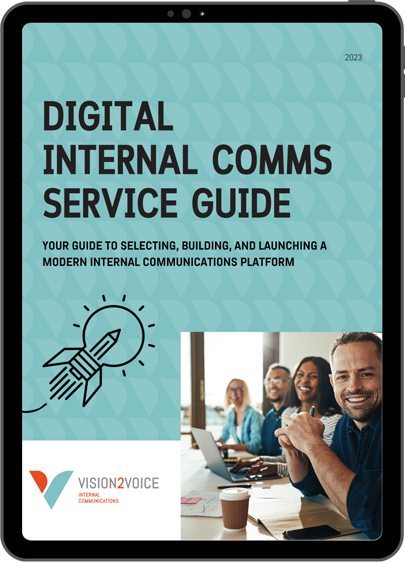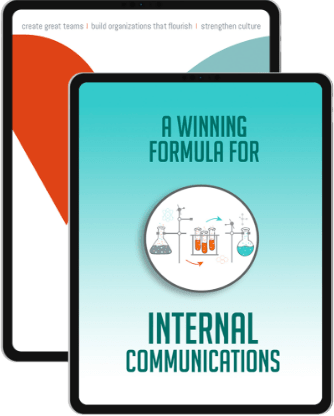Listen first. This is THE essential principle of effective communication. Yet, far too often, internal communication professionals focus on getting the message across, changing behaviours and attitudes, and contributing to an organization’s success. While these are all important, it’s not the place to start.
The best internal communication starts with listening to what employees tell us so that we can truly understand our audience.
Why we aren’t doing enough
Some organizations use mechanisms and structures to listen, such as suggestion boxes, emails, feedback forms, and surveys. The issue with these tactics is that leaders don’t make the extra effort to truly understand employees at a deeper level.
When we talk about listening at Vision2Voice, we focus on learning and understanding.
“Listen with your ears – and your eyes and heart.”
~ Stephen M.R. Covey
In our client work, we believe listening, learning, and understanding are the heart of a great strategy. You can’t emotionally connect with employees without understanding their feelings, thoughts, and concerns.
If you want evidence of this problem, look no further than the latest Edelman Trust Barometer, which shows an enormous gap between executives and individual contributors. This divide is a record 39 percent.
It’s time to make extra effort to listen to employees. It may be uncomfortable, require time to persuade senior leadership, or take some creativity.
Going the extra mile to listen
We are sharing this story on Remembrance Day to inspire you to listen and understand your employees (not just check the box).
Every Remembrance Day, I am reminded of a time I went the extra mile to understand my audience, but it paid off in spades (you’ll get the digging reference in a minute!).
Years ago, I worked on a project for the Canadian Armed Forces. As a communications consultant for a large human resources transformation project, my job was to help military personnel across Canada understand how the project would affect them. It was challenging to understand the perspective of my audience since I was a civilian working at headquarters in Ottawa (I could barely remember the rank structure when I started). What helped was a lot of listening.
I was invited to observe a live fire exercise with a battalion on a military base about two hours away from Ottawa. The group was preparing for operations in Afghanistan, and I jumped at the chance to join them. Within minutes of arriving at the base, I was transformed: fully dressed in combat gear, complete with camouflage makeup (I don’t think they call it makeup, but you know what I mean).
I left for the field, and for three cold days and nights in November, I lived and worked side by side with the soldiers of 1 RCR. I rode in a Light Armoured Vehicle (LAV), fired a howitzer, dug a trench, and spent a snowy, cold night there. During that time, I asked a lot of questions, did a lot of listening, and worked hard to understand what mattered to the soldiers. Three days later, I returned to the base exhausted, badly in need of a shower, but very much enlightened.
The transformative power of listening
Some of my crew thought I was crazy for doing what I did. It wasn’t a mandatory part of my contract, and I wasn’t getting paid. After three days of learning how to dig a trench, eating rations with the crew, and staying up all night, I began to understand my audience and relate to them in a way few other civilians could. From then on, I developed a more compelling change communication strategy and delivered communication that achieved results.
Epitaph
Two members of the crew, Master Corporal Scott Vernelli and Chief Warrant Officer Robert Girouard, tragically lost their lives in Afghanistan.






